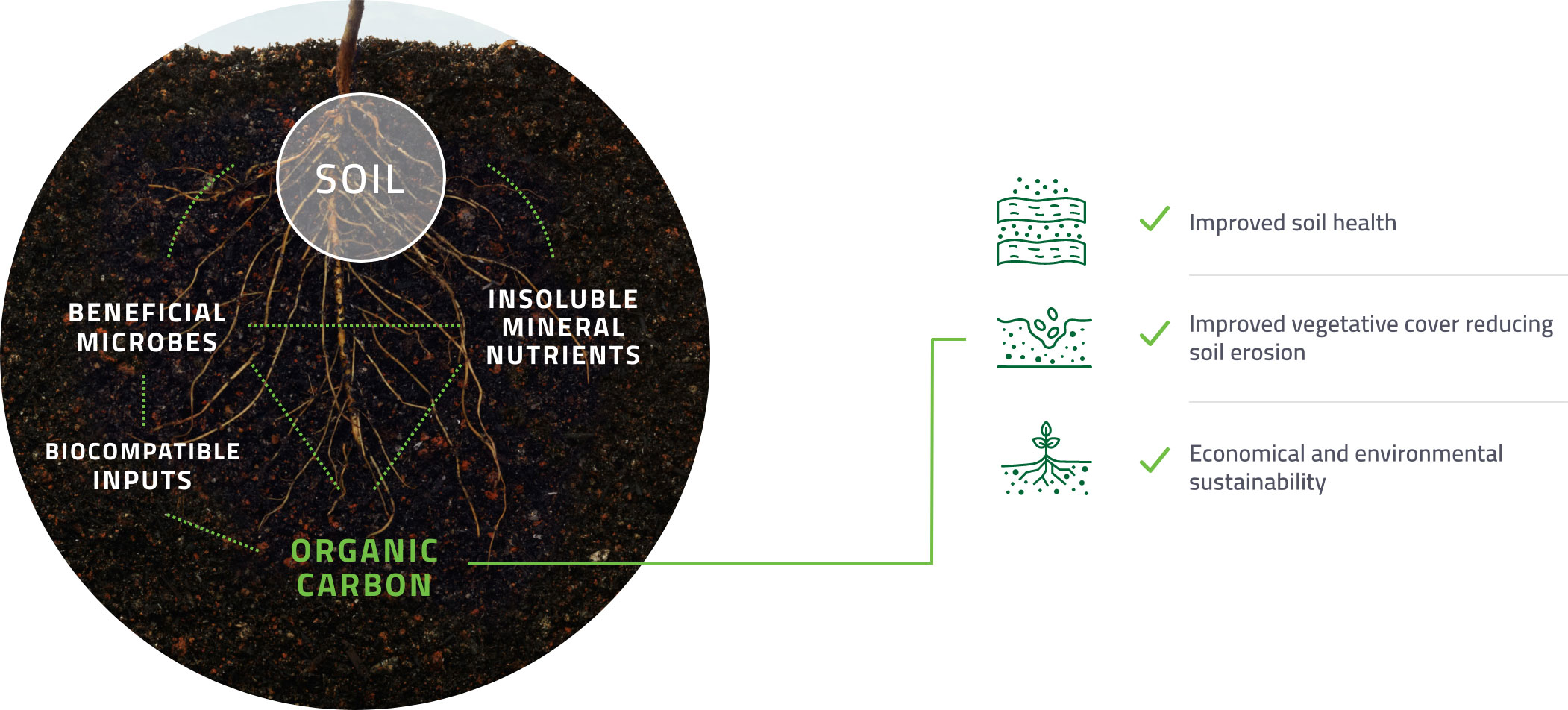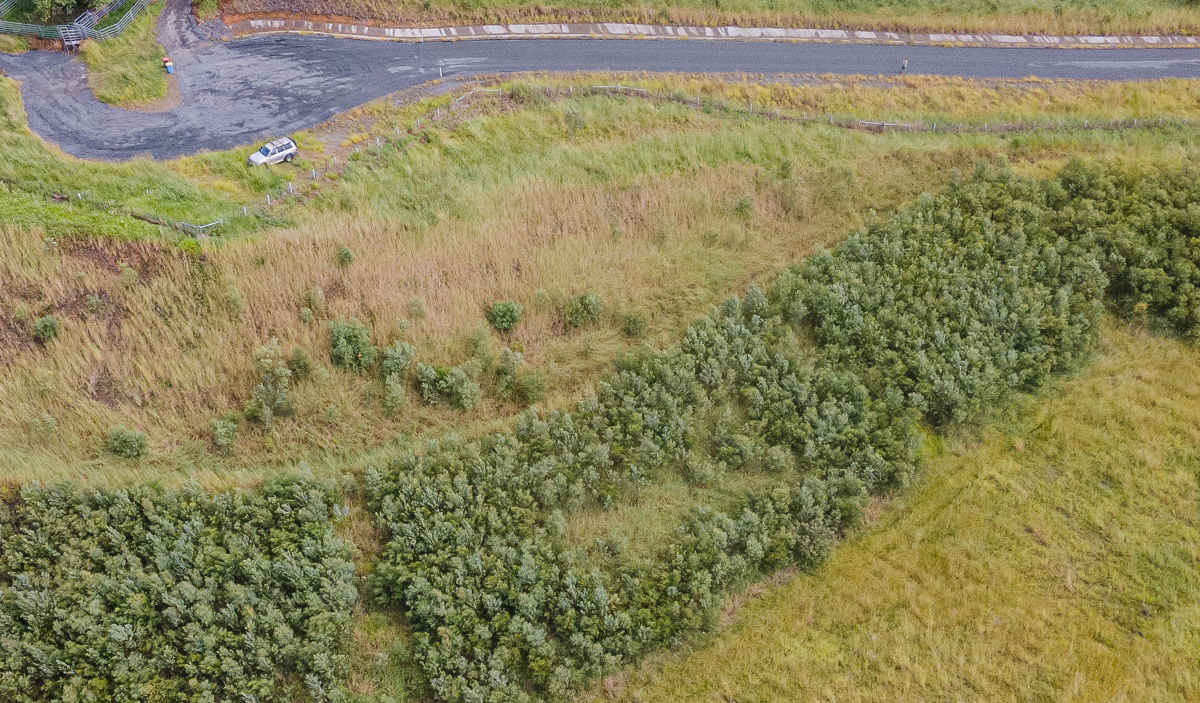Depleted soils on mining and construction sites are often most in need of regenerative soil solutions, but not all solutions are made equal. In order to determine the right solution, it’s important to first understand the nature of soil.
Soil is a living, thriving community of microorganisms, not dissimilar to a community of mammals. Digging or disturbing the soil destroys the microbes’ habitat within the fungal network, killing many and injuring others, and the damage can take many years to repair.
While it’s true that soils on mining and construction sites often suffer from mineral depletion, poor biological diversity, hydrophobicity, low carbon and high sodicity, these issues are not unique to these sites. In fact, they are present in most soils, but often remain undetected deep in the soil profile – unless, of course, the soil is disturbed.
The good news is that it’s possible to rectify soil damage after construction and mining projects in a way that’s economical and relatively simple; however, common application mistakes like the following can interrupt the process.
- Failing to consider the soil microbiome when applying soil conditioners (e.g. gypsum and lime) at high rates can lead to oversupply, which causes soil imbalance like mineral and nutrient lock up, compaction and hydrophobicity.
- Adding compost that has not fully matured, also known as unstable organic matter. This increases the initial carbon consumption, leading to nitrogen drawdown.
- Using soluble fertiliser. As soluble fertiliser simply washes past the plant’s root system, it needs to be reapplied regularly in order to be effective. This is problematic as plants can only take up so many nutrients at any one time, and excess fertilisers eventually flow into and pollute the waterways.
These and similar traditional approaches to solving soil problems are often insufficient for highly disturbed soils like those on mining or infrastructure sites. The best way to remedy extensive damage is by leveraging the synergistic relationship between plants, water, and the soil microbiome.
The relationship between bacteria and plants
Bacteria and fungi have a cyclical relationship with organic nutrients, breaking them down and making them bioavailable to plants. Microbes play an important role at this stage, recycling the biomass above and below the earth’s surface to build nutrient-rich stable carbon for the next cycle of growth and releasing locked-up nutrients in soil, making them more plant-available.
Through this nutrient cycling process, microbes balance the soil and establish symbiotic relationships with plants, providing nutrients in return for carbon sugars; however, as soon as this fine balance is disrupted, the plant health declines. At this stage, new microbes can be added and activated with water, feeding on the nutrients, biostimulants and minerals in the soil.
How to encourage beneficial microbial activity in soil
Creating a minerally balanced, fertile breeding ground of beneficial microbes is integral to the establishment of self-sustaining plant life. Soil conditioning – with the aim of bolstering the microbes responsible for soil formation and nutrient cycling – is the first step, and generally follows the process below.
- Test soil for total mineral and essential nutrient levels. Key nutrients include plant-available calcium, phosphorus and nitrogen and trace elements. The soil conditioning process can then be designed to balance and supplement these nutrients wherever necessary.
- Apply a bio-compatible controlled release fertiliser. This encourages microbial activity.
- Add beneficial microbes. These can access and cycle insoluble minerals and nutrients and feed them back to the plants as part of a long-term relationship. There are several ways in which beneficial microbes build healthy soil for a self-sustaining long-term outcome. They increase water-holding capacity and soil carbon levels, recycle nutrients, balance pH and calcium-magnesium ratios, and improve water filtration rates and overall soil structure.

How to choose the right combination of microbes
A suite of starter microbes and fungi can be introduced to replace and kick-start the microbes that have been depleted, lost or destroyed by soil disturbances.
The products featured in EnviroStraw’s BioGrowth™ program include 22 beneficial bacteria and fungi which have been selected specifically for highly disturbed soils, along with biostimulants, natural soil wetters, natural long strand hydromulch fibres and biocompatible polymers.
The BioGrowth™ program takes a more holistic approach to conventional rehabilitation practices.
The program is designed to adjust soil pH up or down, increase soil carbon levels, reduce hydrophobicity and sodicity, and balance the calcium-magnesium ratios, creating a natural environment in which soil microbiome and plants can thrive. The ultimate goal is to repair and regenerate depleted soils, repair erosion and increase beneficial microbial activity for a long-term, self-sustained outcome.
